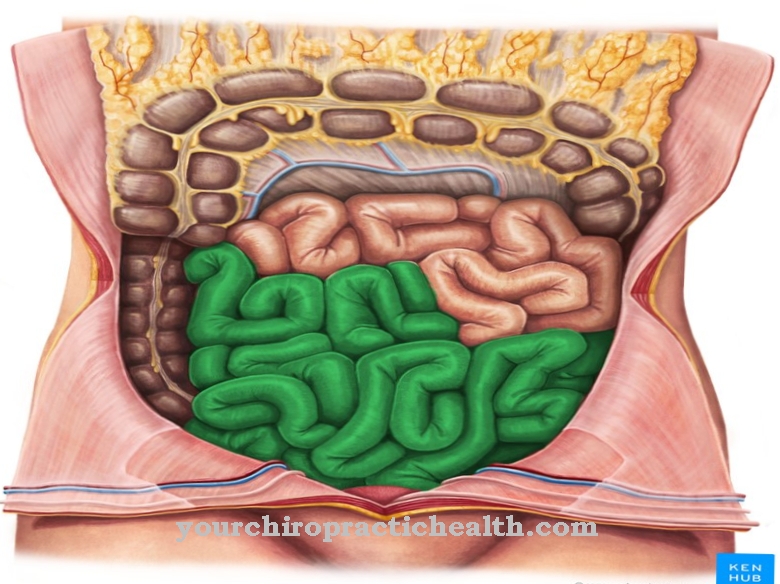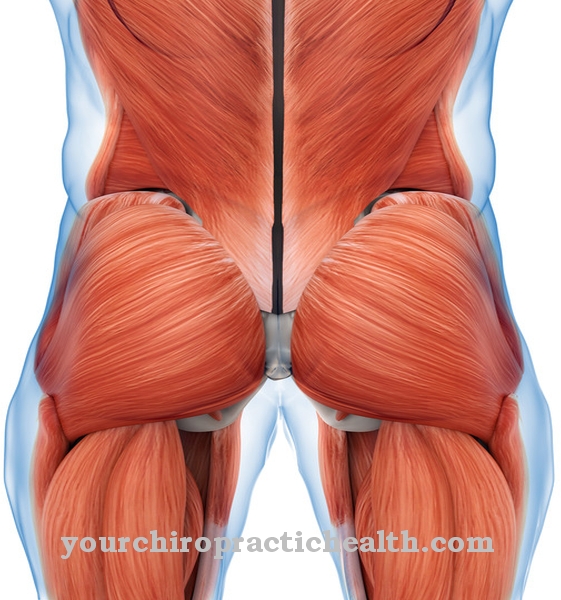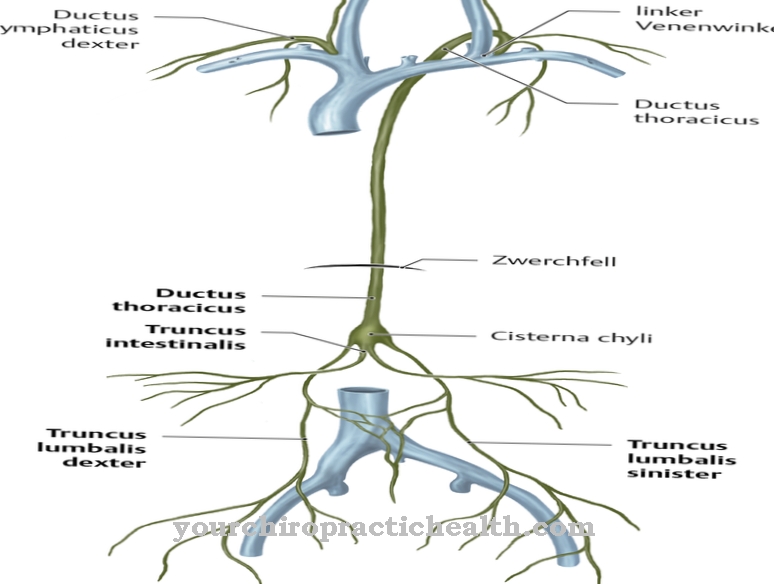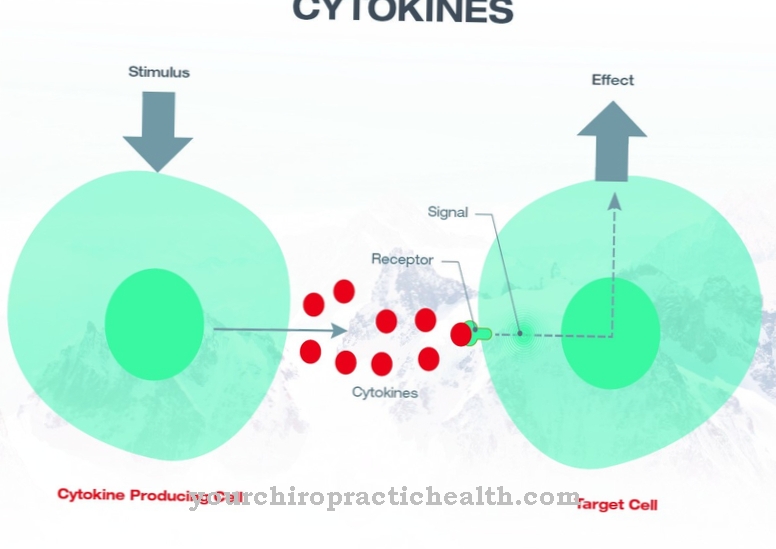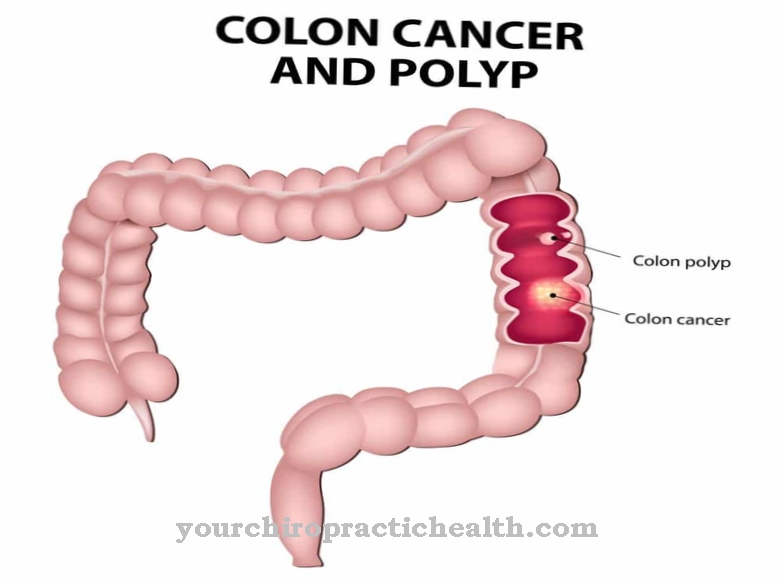As Bile acids is the name given to the body's own steroids from the liver, which have an emulsifying effect on lipids in fat digestion. Bile acids are largely reabsorbed into the liver in the intestine. If this reabsorption is disturbed, for example by inflammation, the bile acid loss syndrome sets in.
What are bile acids?
Bile acids are the body's own steroids, which are indispensable end products of cholesterol metabolism and form an important part of bile. As derivatives of cholesterol, they play a role in the digestion of fat and the absorption of lipids. The liver produces bile acids in its hepatocytes from the raw material cholesterol. In addition, hydroxylation reactions and oxidative shortening take place.
Chenodeoxycholic acid and cholic acid are the only primary bile acids in the human body. Conjugated bile acids are also known as bile salts or secondary bile acids. Around 200 to 500 milligrams of bile acid are synthesized in the liver in a healthy person every day and released into the intestine when required. Bile acids take part in the enterohepatic cycle and are therefore reused several times. They circulate between the liver and the intestine, where they are reabsorbed into the liver. Their reabsorption takes place in the ileum.
Anatomy & structure
Bile acids are an important part of the bile, which is largely made up of water. Cholic acid is a primary bile acid. These acids are not freely available in the bile. They are first conjugated with glycine or taurine in the liver to form amides. The conjugation results in tauro and glycolic acids, which are also called tauro and glycocholate. These substances are and will be the anions of cholic acid Bile salts called.
They are temporarily stored in the gallbladder. The bile salts reach the duodenum in pulsating movements via the father's pupil and the bile ducts. The stored glycine and taurine are broken down by bacteria. During this split, the hydroxyl group on the side chain is removed, so that deoxycholic acids are formed. These deoxycholic acids are also known as secondary bile acids. The primary and secondary bile acids are reabsorbed in the terminal ileum about six to ten times.
Function & tasks
Bile acids are soluble in both water and fats. After eating, they are released from the bile into the small intestine if necessary. There they stabilize emulsions, i.e. mixtures of immiscible substances. This means that they have an emulsifying effect on dietary fats because they form micelles with them. They lower the surface tension of water and emulsify water-insoluble components in the intestine, such as lipids. This increases the vulnerability of the fats to enzymes and creates ideal conditions for absorption.
In particular, the bile acids enable the fats to be broken down by the water-soluble enzyme lipase. Thanks to the bile acids, the human body can also excrete excess cholesterol. The group of primary bile acids consists of cholic acid and chenodeoxycholic acid, around 95 percent of which are reabsorbed again after fulfilling their tasks. Secondary bile acids are all products of the primary bile acids that are generated by processes external to the liver. The bile acids are reabsorbed by ionic and non-ionic diffusion.
It is transported back into the blood of the portal vein via the basolateral membrane using anion exchangers and cytosolic transport proteins. About 0.6 grams of bile acid is lost in the stool every day. This loss is compensated for by the cholesterol synthesis in the liver. The secondary bile acid deoxycholic acid is structurally related to the steroid hormones. Therefore, there has been speculation about secondary bile acids being involved in the hormonal balance. Above all, there is speculation about an antagonistic interaction with glucocorticoids.
Diseases
When the ratio of bile acid to cholesterol in the gallbladder is less than 13: 1, cholesterol can precipitate. This phenomenon results in the formation of gallstones, also known as cholesterol stones. In many cases, gallstones do not cause any symptoms and go unnoticed for a long time. If the stones get trapped, they usually cause colic or inflammation and must therefore be removed. The bile can build up through gallstones in the bile ducts. There is then an increased concentration of the bile acid value in the blood.
On the other hand, there is an increased formation of bile acid in colon cancer. Another phenomenon occurs when parts of the small intestine are removed or are regularly affected by chronic inflammation. The bile salts are no longer adequately reabsorbed, because 98 percent of the reabsorption takes place in the small intestine. After the removal of parts of the intestine or in the case of a chronic inflammatory bowel disease such as Crohn's disease, patients therefore suffer from disturbed fat digestion. The majority of the bile salts are no longer reabsorbed, but excreted in the stool.
This phenomenon is noticeable in fatty stools with a large volume, also known as chologene diarrhea. Bile acid reaches the large intestine, which it should not actually reach due to the reabsorption processes. This bile acid loss syndrome can irritate the colon and increase the risk of colon cancer. As a rule, the bile acid loss syndrome is primarily a consequence of damage to the Bauhin valve. If the bile levels in the blood are low, there may also be liver disease. In the case of liver damage from alcoholism, for example, the liver cells synthesize significantly fewer bile acids.

